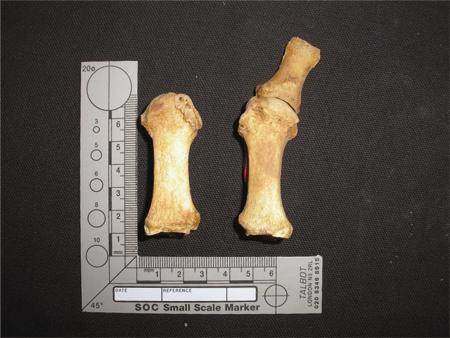Skeletal remains can show quite a lot about the health of the deceased person. In the human remains uncovered during the archaeological dig in the former East Kirk in 2006, there were clear indications of diseases which are uncommon today, such as the rickets and osteomalacia shown in a previous post. However, some conditions are still prevalent today; indeed, they might be increasing. This post shows such an example ─ bunions!!
Technically, a bunion is called hallux abducto valgus deformity. It forms when there is pro−longed sideways pressure on the big toe (the hallux) forcing it inwards. The tissue around the joint becomes swollen and tender to touch and some bony tissue may be deposited. Both of these contribute to the pain associated with bunions. Not all the swelling is caused by these effects on the joint, because some is the exposed end of the first metatarsal. It is salutary that societies where shoes are not worn do not have cases of bunions.

A number of individuals were found during the archaeology who had suffered from bunions. One example is shown, the photograph having been taken by osteoarchaeologist Paul Duffy (Brandanii Archaeology and Heritage, www.discoverbutearchaeology.co.uk) during his detailed study of the remains.